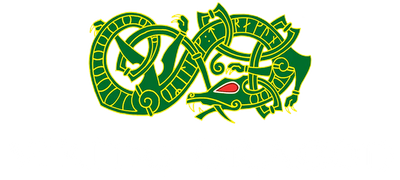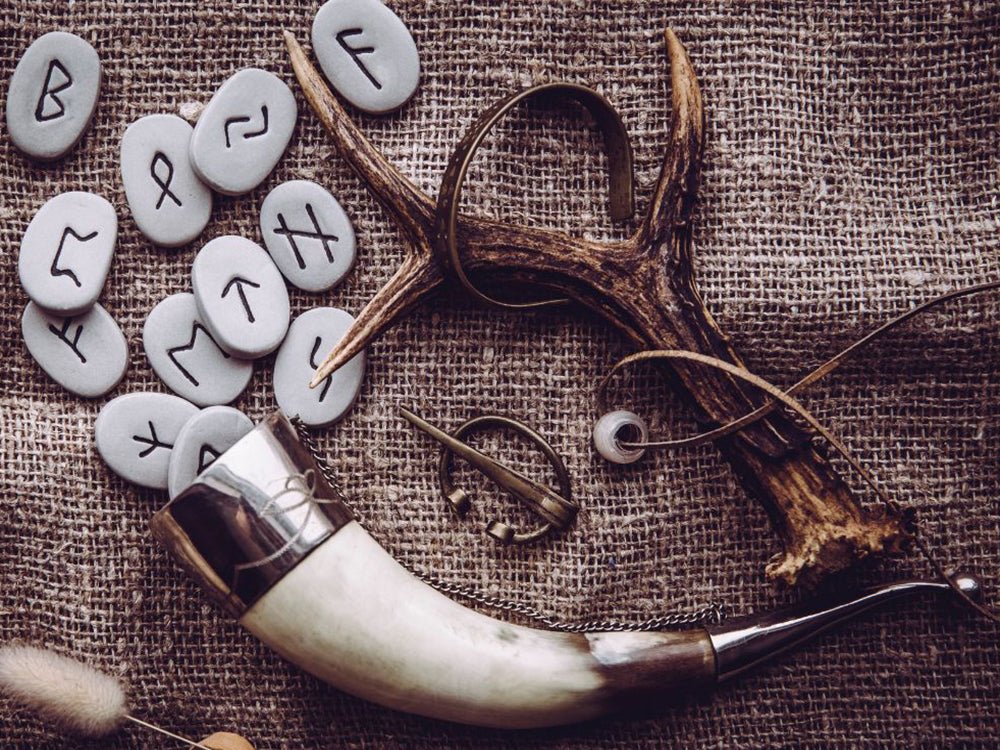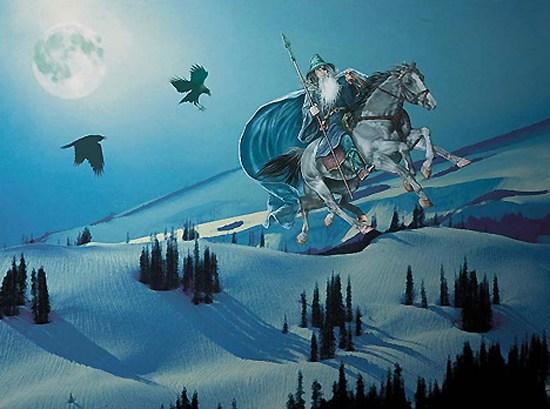Much of what we know about the Vikings today comes from epic poems, called sagas, most of which were written in Iceland from the 12th to the 15th centuries. The sagas focus heavily on the lives of individuals, usually great kings, or warriors and explorers, who spread Norse rule from Scandinavia, out across Europe, and even to North America. It’s for that reason that when we talk about the Vikings, we often do so through the medium of personal stories. So, if you’re looking to learn more about the Vikings, why not start with five of the most famous Vikings in history, who together encapsulate several elements that make the ancient Norse such a fascinating and influential people?
Ragnar Lothbrok: A True Viking Warrior and Raider

Although the Norsemen were a multifaceted society, in popular culture they are most often depicted as fearsome warriors and raiders. The name most associated with the Viking attacks and raids on the British Isles is that of Ragnar Lothbrok (sometimes also written as ‘Lodbrok’), who has gone down in history as a fearless leader and unstoppable warrior. The life of this semi-mythological figure was first recorded in ‘Saga of Ragnar Lothbrok,’ however, he has recently reached a new level of fame as a character in the hit TV show ‘Vikings.’
Lothbrok was the son of King Sigurd Ring, who, according to legend, overthrew his uncle, the king of Denmark, with help from Odin himself. He would go on to exceed his father’s fame through his frequent attacks on the British Isles as well as various continental European kingdoms. Perhaps the most impressive story of Lothbrok’s prowess in piracy tells of his campaign in France against the grandson of Charlemagne, Charles the Bald, in which his army was so skilled in battle against the Frankish first division that the rest of King Charles’ men fled. He is said to have met his end in no less dramatic fashion. Thrown into a pit of venomous snakes by the king of Northumbria, Lothbrok foretold that his sons would avenge his murder by raising an army against the Anglo-Saxons, the likes of which they had never encountered…
Ivar the Boneless: Commander of the Great Heathen Army
In 865, after around a century of Viking raids, Anglo-Saxon sources tell of an abnormality in the Norse landings: a 3000-strong army sweeping across the island, pillaging, burning and plundering as they went. The Christian Britons called them the ‘Great Heathen Army’ due to their propensity to strike monasteries. Ragnar Lothbrok had been right to warn of the wrath of his sons, as this army was commanded by three of his children, chief among them Ivar the Boneless.
The Great Heathen Army first landed in East Anglia, where it was met with little resistance. It then swept into Northumbria, where Ivar deposed the king who had murdered his father and captured the capital city of York. Not content to end his conquering journey here, Ivar would, throughout his life, bring numerous British and Irish kingdoms under Viking rule. By the time of his death in 873, he was known as the ‘King of the Norsemen of all Ireland and Britain.’
Harald Bluetooth: A Uniter as well as a Fighter
Unlike the two figures mentioned above, Harald Bluetooth is famous not just for fighting, but for uniting. He is especially remembered for three things: unifying Denmark, conquering Norway, and converting the Danes to Christianity. Harald was the son of Gorm the Old, who had already begun the process of unifying the region. When Harald became king he continued in his father’s mission of consolidating all of Denmark under a single banner, which he accomplished through military campaigns and fortifying already conquered land. He also entered into partnerships with bishops and monasteries and sponsored the spread of Christianity across the kingdom. He was eventually baptised himself and converted his father’s pagan burial ground into a Christian Church between two impressive burial mounds.
Perhaps the most tangible expression of Harald Bluetooth’s legacy is the Jelling Stones, a set of carved boulders displayed outside the Jelling Church in Southern Jutland. These stones are sometimes called ‘Denmark’s birth certificate,’ as an inscription on the rock claims that Harald ‘won for himself all of Denmark and Norway and made the Danes Christian.’ This is the first time that the word Denmark is recorded. The stones also show one of the earliest examples of Christian art in Denmark: a beautiful crucifix drawn in a Nordic style which has become so iconic an image that it is featured on the front page of the modern Danish passport.
Cnut the Great: The King of Five Kingdoms

The team who invented modern Bluetooth technology have stated on numerous occasions that they chose the name because they wanted their software to unite devices just like King Harald united the Kingdoms of Denmark and Norway. Well clearly they never heard of Cnut the Great, who by the time of his death had united five kingdoms: Denmark, Norway, England, Wales and Scotland (as well as a lot of Sweden too). While he was formidable in the battle, Cnut was also a skilled diplomat, paying tribute to neighbouring kings, entering non-aggression pacts and marrying his daughter, Gunhilda, to the son of the Holy Roman Emperor.
While some of the details of his reign might be new to you, you’re likely familiar with a fable in which King Cnut orders the sea not to wet his feet as he walks into the waves, resulting in him looking vain and deluded when the ocean doesn’t obey him. Though famous today, this is not the original version of the story. The tale recorded in the 12th century by Henry of Huntingdon has the king placing his chair on the seashore and commanding the waves to stay back. When the sea continues to lap at his feet, he turns to his courtiers and admonishes them for constantly praising him as mighty and all-powerful, proclaiming that the power of a king is ‘empty and worthless.’ Various scholars have attempted to explain why the popular version of this story has changed, making Cnut a proud rather than humble king. Some academics blame the ‘bloodthirsty and ruthless’ popular image of the Vikings for the change in Cnut’s image, while others suggest that it is a result of waning support for monarchies and increasing republican sentiment in the 19th century.
Lief Erikson: the Viking who discovered America
It wouldn’t be a list of famous Norsemen without a nod to the Vikings’ excellent abilities as seafarers. The best-known Viking explorer is, of course, Lief Erikson, the first European to set foot in the Americas, beating Columbus to the continent by over 400 years.
Lief was never destined for a quiet life. His grandfather had been exiled from Norway for murder, and established the family in Iceland, from which Lief’s father, Erik the Red, was himself also exiled. Without anywhere to go, Erik voyaged further West and ended up establishing the first Viking settlement in Greenland. Exploring, it seemed, was in Lief’s blood. He first whetted his seafaring appetite on a voyage to Norway, before embarking on his most famous journey, all the way to Newfoundland, in modern-day Canada. The two sagas which detail the life and explorations of Lief Erikson (the Saga of Erik the Red and the Saga of the Greenlanders) describe the area where he landed as a verdant coast, rich in grapes. For that reason, he named his new home Vinland (meaning Wineland).
While the saga-writers may have taken some poetic liberties in their descriptions of Vinland, there is plenty of archaeological evidence supporting the existence of a Viking settlement in Newfoundland dating from around the time of Erikson’s voyages. Digs in L’Anse Aux Meadows in the 1960s turned up some fascinating samples of everyday Norse items, along with boats, a carpenter’s workshop and a smithy, which point to a settlement of 70-90 people. There’s also evidence that these settlers ate food brought north from further down the American coast, perhaps from the fabled Vinland where, in a warmer climate, luscious grape vines could have grown in the quantities that the sagas describe.





